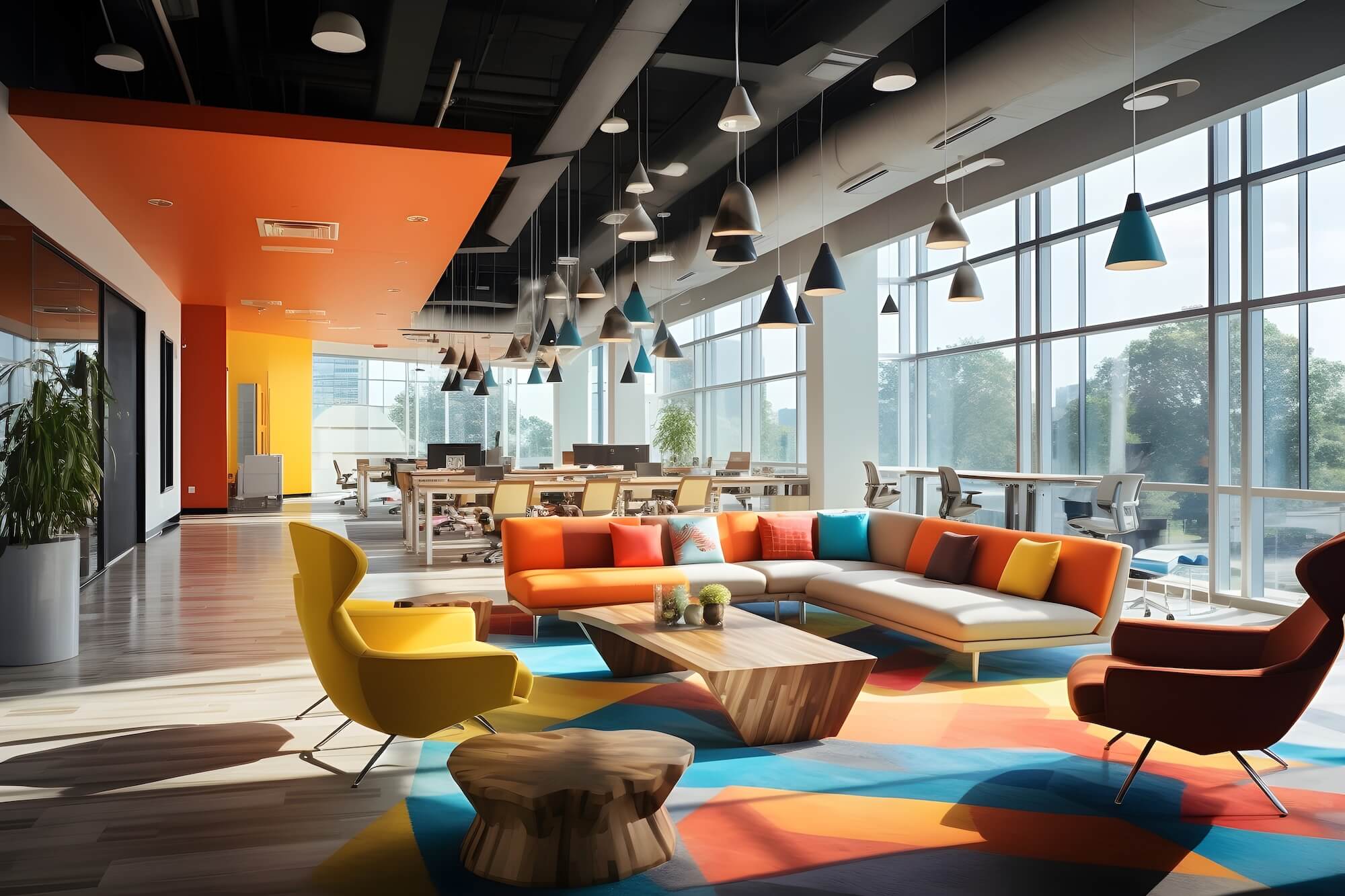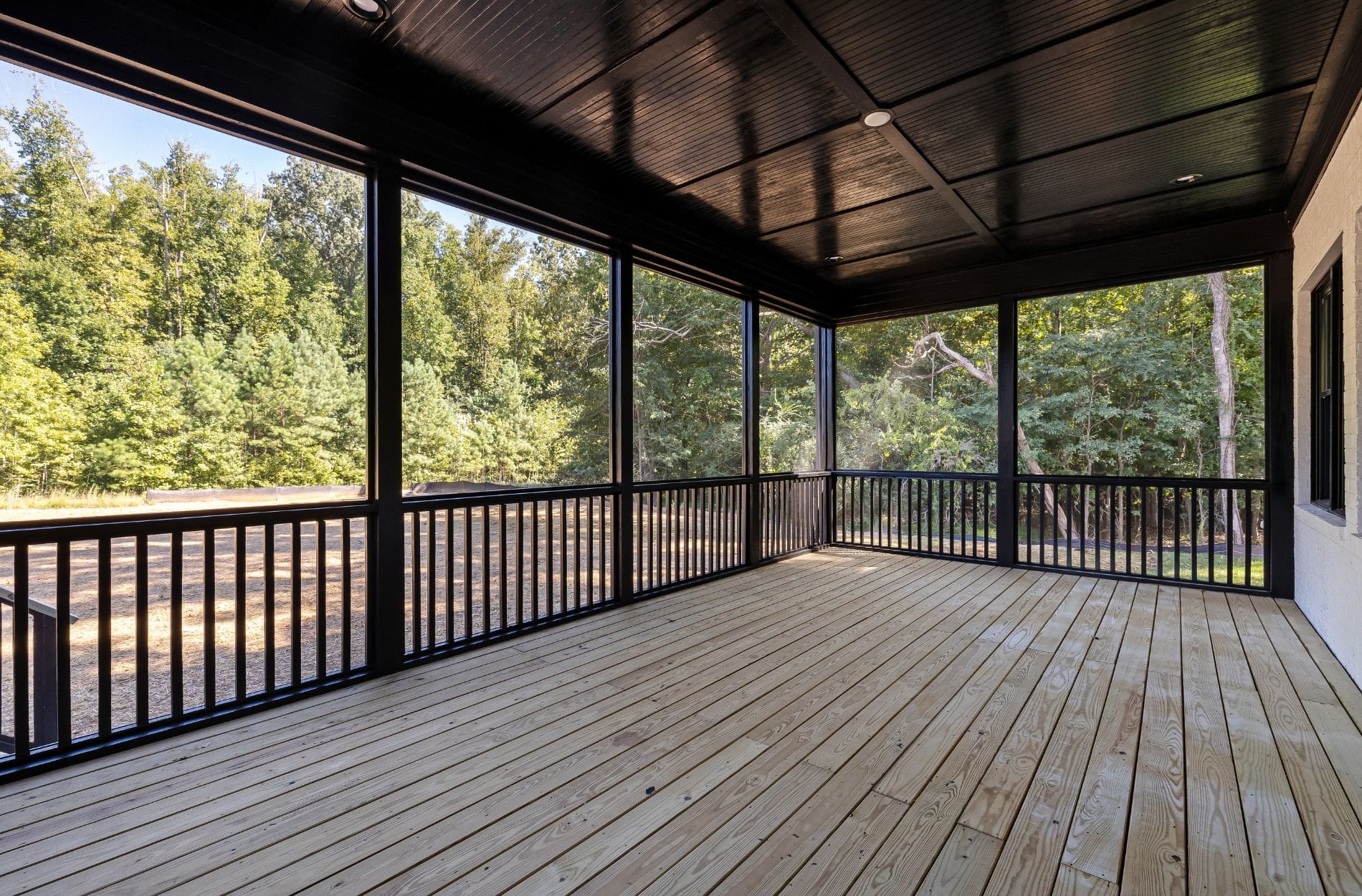
The Impact of Commercial Interior Design on Workplace Productivity
In the competitive world of business, the design of a commercial space plays a vital role in influencing both employee productivity and client impressions. A well-considered environment that balances aesthetic appeal with functional efficiency can significantly boost worker satisfaction and foster a perception of professionalism and stability. This comprehensive exploration delves into how commercial interior design, through thoughtful use of color, efficient space planning, and ergonomic furniture, contributes to creating productive workspaces.
The Psychology of Color in Commercial Spaces
Color is not just an aspect of decoration; it’s a powerful tool that can influence mood and energy levels significantly, thereby affecting overall workplace atmosphere and productivity. Research shows that different colors can evoke different responses: blue, for instance, is often associated with calmness and can help in concentration, making it ideal for intensive work environments like programming or financial services. On the other hand, warmer colors like orange and yellow, are noted for boosting creativity and energy, making them suitable for dynamic fields such as creative design and marketing.
Consider the psychological impact when choosing colors for your workspace:
- Blue fosters mental clarity and is soothing, ideal for high-stress environments.
- Yellow stimulates creativity and energy, perfect for brainstorming areas.
- Green is restful for the eyes and promotes balance, suitable for places where individuals need to work for long periods.
- Red can energize and provoke urgency, which might be beneficial for areas that require physical activity.
Using these colors strategically can enhance the functionality of specific areas within your business and positively influence productivity and morale.
Designing for Efficiency
The physical layout of a workspace significantly impacts productivity by minimizing unnecessary movement and facilitating easier access to tools and resources. Effective design is about more than just aesthetics; it involves creating a flow that enhances efficiency and reduces time wastage, which is particularly crucial in high-traffic areas like receptions and collaborative workspaces.
Key strategies include:
- Zoning: Designate specific areas for particular activities to reduce cross-office movement.
- Cluster Desking: Use open-plan spaces effectively by clustering desks according to departmental needs, which fosters collaboration.
- Accessibility: Ensure that essential equipment like printers, copiers, and files are easily accessible to those who need them most frequently to avoid unnecessary movement.
Adopting these strategies not only improves productivity but also helps in maintaining an organized and clutter-free workspace.
Incorporating Brand Identity
The physical environment of a company can serve as a powerful expression of its brand identity, reinforcing the brand’s values and culture. Thoughtfully integrating brand elements such as logos, colors, and design motifs into a workspace can strengthen a company’s identity and enhance employee engagement and loyalty.
For example, a tech company might incorporate sleek, modern designs with bold accents that reflect its innovative spirit. Alternatively, a law firm might opt for a more subdued, classic decor that communicates professionalism and stability.
Effective branding within a workspace can:
- Reinforce company values: Use design elements that reflect the brand’s ethos.
- Enhance company culture: Create spaces that promote the company’s way of working and interacting.
- Boost employee morale: A workspace that reflects a strong brand identity can make employees feel more connected and proud of their company.
Lighting and Its Effects on Work Environment
Lighting is crucial in any workspace design due to its profound impact on productivity and well-being. Good lighting should enhance visibility without causing glare and should cater to the varied needs of different spaces within your business.
- Natural Light: Where possible, maximize the use of natural light as it is linked to increased productivity and better mood among employees.
- Task Lighting: Provide additional task lighting where needed to help employees perform specific tasks without straining their eyes.
- Ambient Lighting: Use ambient lighting to create a comfortable environment that softens the shadows and reduces the contrast between task lighting and the surrounding area.
Integrating various lighting types can help create a more dynamic and adaptable work environment, suitable for a range of tasks and activities.
Furniture Choices and Ergonomics
Choosing the right furniture goes beyond aesthetics—it’s about comfort and health. Ergonomic furniture supports proper posture and helps prevent injuries, which can otherwise lead to reduced productivity and increased absenteeism.
When selecting furniture, consider:
- Adjustability: Ensure that chairs, desks, and other pieces of furniture can be adjusted to meet the different ergonomic needs of employees.
- Quality: Invest in high-quality furniture that not only lasts longer but also provides better support and comfort.
- Functionality: Choose pieces that are both functional and fit the aesthetic of your workspace, ensuring they serve the intended purpose without compromising on style.
Ready to Transform Your Workspace?
Elevate your business environment with the professional touch of Midwest Paint. Our team of experts is ready to help you enhance productivity and breathe new life into your commercial space with tailored design solutions. Contact Midwest Paint today to schedule a consultation and see how we can make your design vision a reality. Don’t wait to create a workspace that inspires success!



